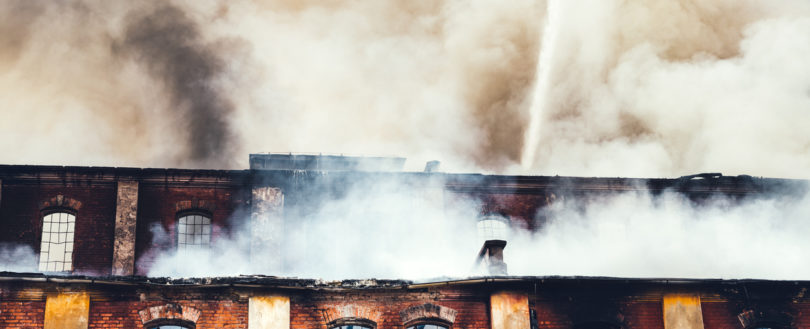- Homepage
- News
- Blogs & Articles
- Fire, the Environment, and Foam

Fire, the Environment, and Foam
Like it? Share it!
06 February 2019 by Robert Thilthorpe, FIA Technical Manager
The FIA has created a new technical document called ‘Fact File 87 – Fire, the Environment, and Foams’ to discuss the usage of Class B foams to extinguish fires, and suitable best practice, with particular concern towards environmental factors.
The document covers the background to the usage of firefighting foams, the environmental impact of large fires, the benefits of using foams on fighting large fires, and the implications of not using foams in these situations.
Additionally, the document advises best practice when fighting fires with foams, testing foam systems, training, and applicable legislation.
The scope of the document states:
“Although Class A foams, Wetting Agents and Water Additives are all used in firefighting applications this document will focus on Class B foams, as these are currently by far the largest proportion of foams currently in use and being sold within the United Kingdom. Where these other agents are to be used and dispersed it should be remembered that the same rules relating to the dispersion of firefighting run-off into the ground or water environment apply, and the onus is on the operator to ensure that dispersion follows the applicable legislation.”
The document has been created by the FIA’s Extinguishing Council.
Bob Whiteley of Tyco Fire & Integrated Solutions Ltd, who sits on the Extinguishing Council, and helped to develop the guide said: “This document updates an old fact file. We have completely rewritten it because so much has changed over the years. There have been a lot of changes in terminology, legislation, and technology, with a higher emphasis on the environmental impact of foams.
“Because environmental concerns have become so significant, those that work with foams need to consider the environmental impact of it. For example, the question of whether it is better for the environment to let the fire burn out, given that the smoke produces pollutants, or is it better to use foam and deal with the containment of the foam. Both situations have environmental concerns.
“In any instance, it is important to use best practice, and to choose the right tool for the job. Foams, for instance, can be much more efficient than using water. However, training is important, as this document highlights. It is no good buying expensive equipment if no one knows how to use it.”
The document contains key information surrounding the usage of foams and is ideal for anyone who uses foam products, and for owners of sites where foam may be stored or used.
Robert Thilthorpe, Technical Manager at the FIA and Secretary to the FIA Extinguishing Council, added: “This document updates the original FIA Fact File to take into account changes in environmental legislation impacting on fire fighting foams. It gives the best practice guidance on use of Class B Foams, recognising that there is increasing pressure on their use.”
-

Robert Thilthorpe
FIA Technical Manager
Related posts
-
New fire safety standards: FIA announces BS 5306-8: 2023 updates
08 January 2024
By Robert Thilthorpe, FIA Technical Manager
-
On this day, forgotten disasters: Harrow Court fire
02 February 2023
By Kirsty Lavell, Marketing Manager
-
On this day, forgotten disasters: the Colney Hatch fire
23 January 2023
By Kirsty Lavell, Marketing Manager
Related news
-
Technical Notice: PFOA Ban Update
03 July 2025
